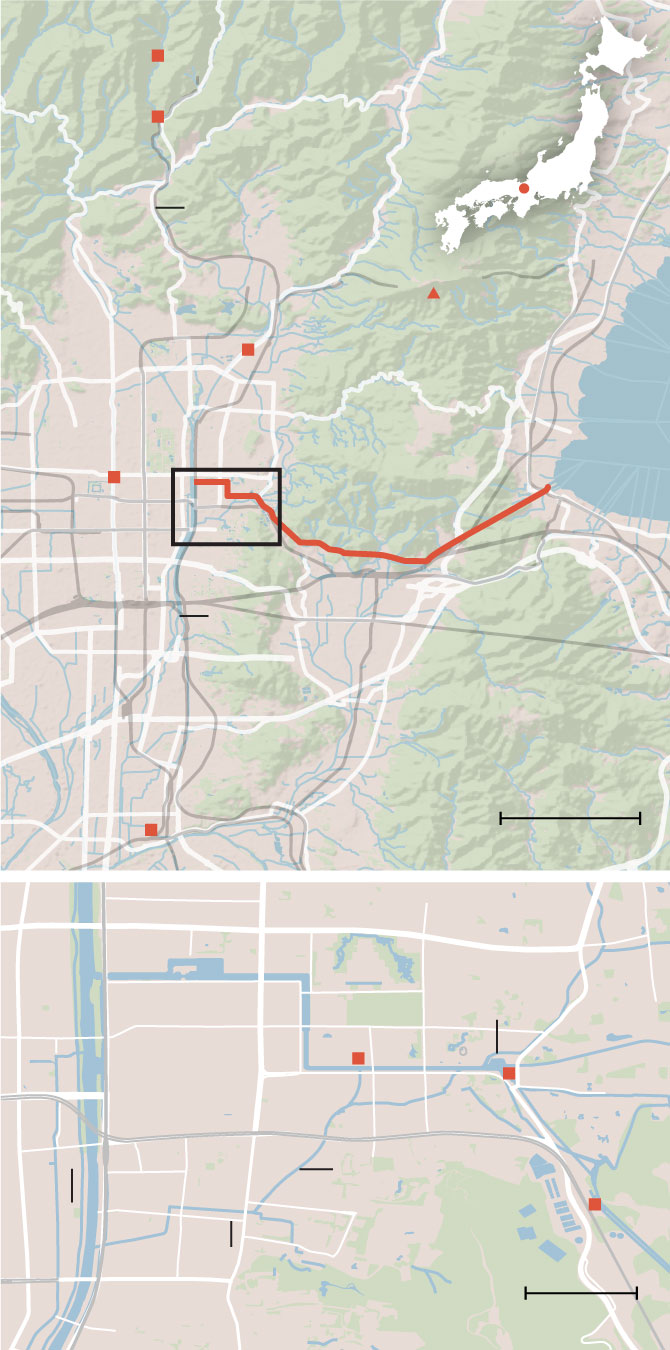
The Japanese city is famous for its temples and gardens, but it is laced with waterways that can offer a different, and no less enchanting, view.
For more than a millennium, Kyoto flourished as the imperial capital of Japan. But in a seismic upheaval known as the Meiji Restoration, in which feudal shogunates gave way to a modern nation-state, the capital was moved to Tokyo in 1868. And Kyoto fell into decline.
The governor of Kyoto Prefecture looked to giant Lake Biwa to the east for a revival. Building a canal from the lake some eight miles into Kyoto would irrigate land for farms, generate hydro power for factories, and ramp up traffic of goods and people. The first canal was finished in 1890, and as a display at the Lake Biwa Canal Museum explains, “strongly led a depressed Kyoto into recovery.”
It’s a safe bet that the governor, Kunimichi Kitagaki, had no idea that 134 years later his sepia portrait would be sharing that narrative with tourists barreling through the canal’s longest tunnel in a glass-topped boat. But there he was, projected on the side of the narrow tunnel, explaining in Japanese how workers drilled shafts into the mountain so they could dig out more than one section at a time.

“Three, two, one!” our cruise guide, Saki Tanaka, shouted over the public address system, pointing up at the low, arched ceiling.
A curtain of cold water crashed down from one of those shafts, splashing those of us seated in the front of our open-sided 12-person Lake Biwa Canal Cruise boat.

Kyoto
 Print
Print


